10 Types of Sprinklers for an Ultra-Green Yard
If every lawn is different, your sprinkler should be too


When it comes to getting the type of lawn that will make your neighbors green with envy, how you water your grass matters. It’s not just about creating the perfect lawn-watering schedule, it’s also about the sprinkler. Different types of sprinklers are designed for different jobs. Some are best suited for a small lawn; others work better in watering shrubbery. This guide will help you choose the best sprinkler for your outdoor space.

1. Oscillating Sprinklers

Oscillating sprinklers are often seen as the go-to sprinkler attachment. They’re the kind many of us remember running under as kids—but they’re not as advanced as automatic sprinkler systems. This no-frills system sprinkler attaches right to your garden hose and churns out a fan-like spray that moves back and forth. Generally, this type of sprinkler works best on rectangular areas—whether it’s a small or large rectangular lawn.
Pros:
Ideal coverage for square or rectangular spaces.
Budget-friendly (with some options less than $30).
Portable and can move anywhere your hose reaches.
Some models let you widen or narrow the stream.
Cons:
Typically doesn’t have high-end features.
Wind sometimes impacts the high spray.
Not all models have a consistent stream.
May have to move your sprinkler several times to adequately water your lawn.
2. Fixed Sprinklers
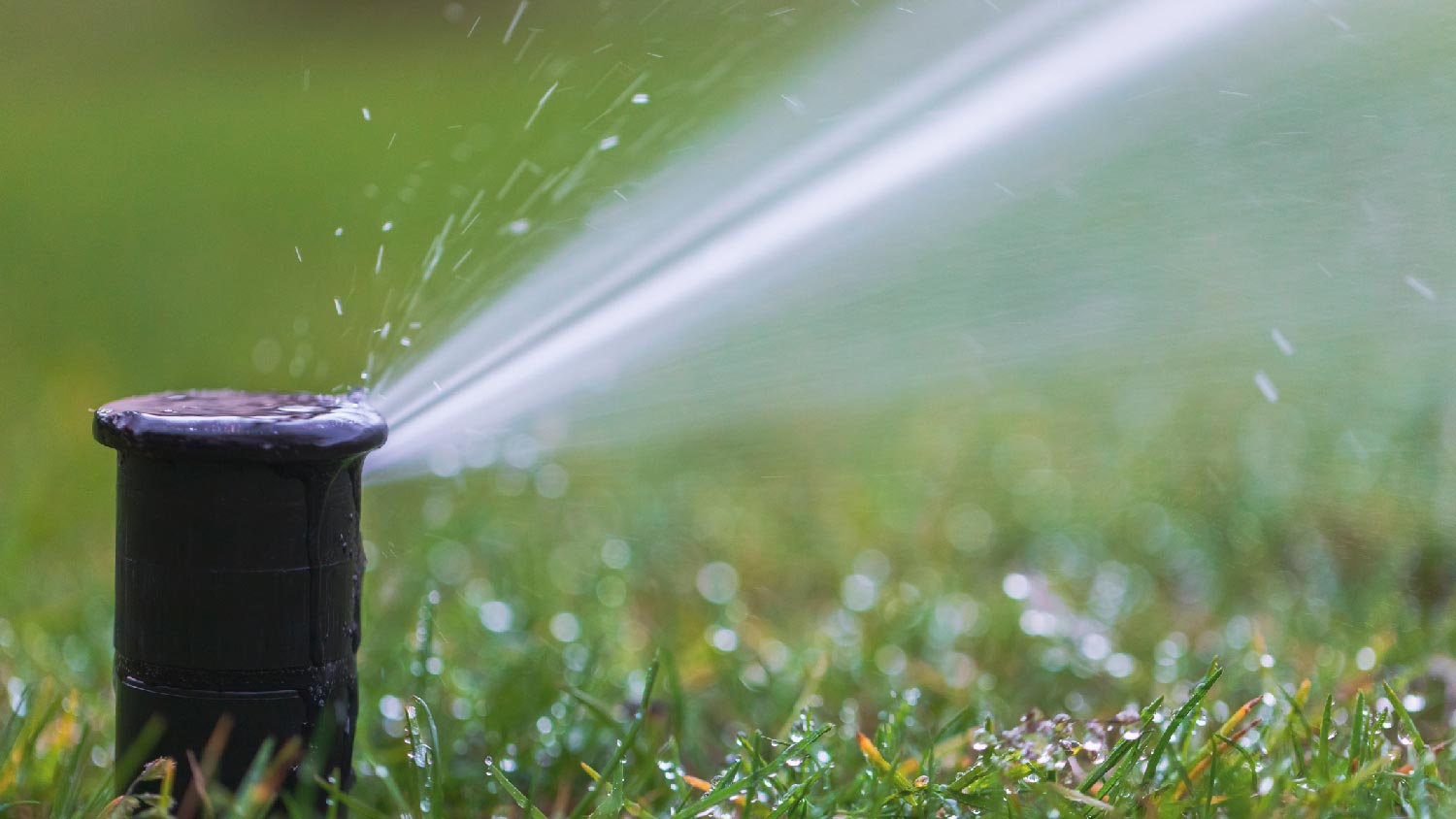
Fixed sprinklers are what they sound like—their nozzle is fixed in place. That may sound limiting, but this type of sprinkler is surprisingly versatile. It comes in all kinds of sizes with different spray patterns. If you don’t want to splurge on the cost of a sprinkler system, you can choose a model that screws right onto your hose. Basically, there’s an option for every lawn.
Pros:
Budget-friendly (with options under $20).
Portable models are great for small areas and landscaping features.
Certain models work well with low water pressure.
Can spray large volumes of water quickly.
Can cover a larger area with multiple sprinklers.
Cons:
Large water volume makes it easy to overwater.
Difficult to obtain even coverage.
May have to move your sprinkler several times to adequately water your lawn.
3. Impact Sprinklers
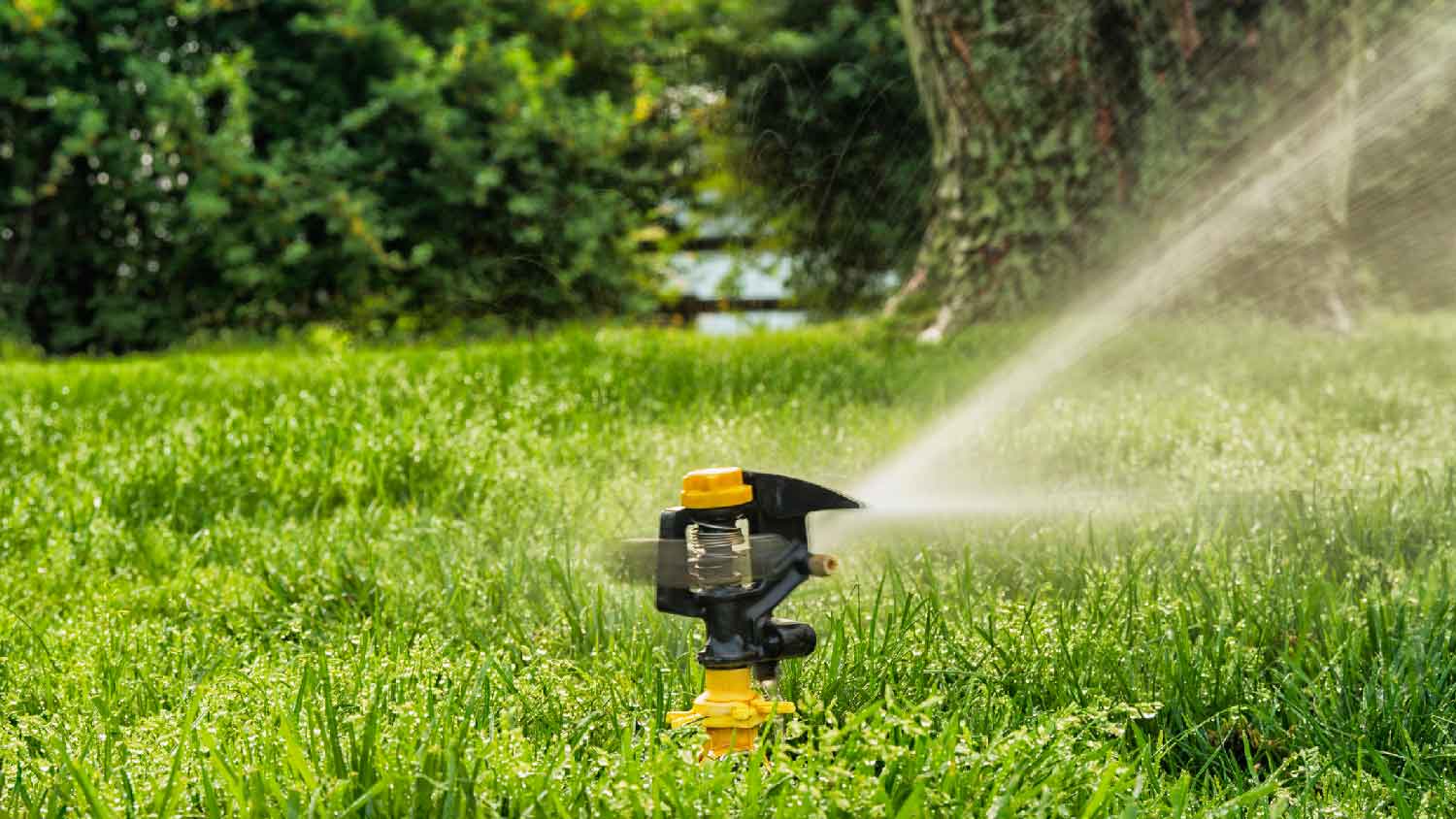
Were your childhood summers spent listening to the familiar click of a sprinkler? That’s the sweet sound of an impact sprinkler. This sprinkler has a powerful stream of water that actually helps push the sprinkler head in a circular pattern, resulting in that infamous click, click, click.
These sprinklers can put out a lot of water quickly, which makes them great for large areas. Because of the sheer power, they can damage very young or freshly seeded lawns. They can even knock a flowerhead right off the stem—so make sure you use a diffuser pin to soften the spray when you’re watering delicate plants.
Pros:
Budget-friendly (with options less than $40).
Can cover large areas.
Strong stream isn’t impacted by wind.
Can offer circular or pie-shaped coverage.
Cons:
Difficult to adjust.
Inconsistent coverage.
Perform poorly with low water pressure.
Powerful stream that can damage delicate lawns and foliage.
4. Rotary Sprinklers
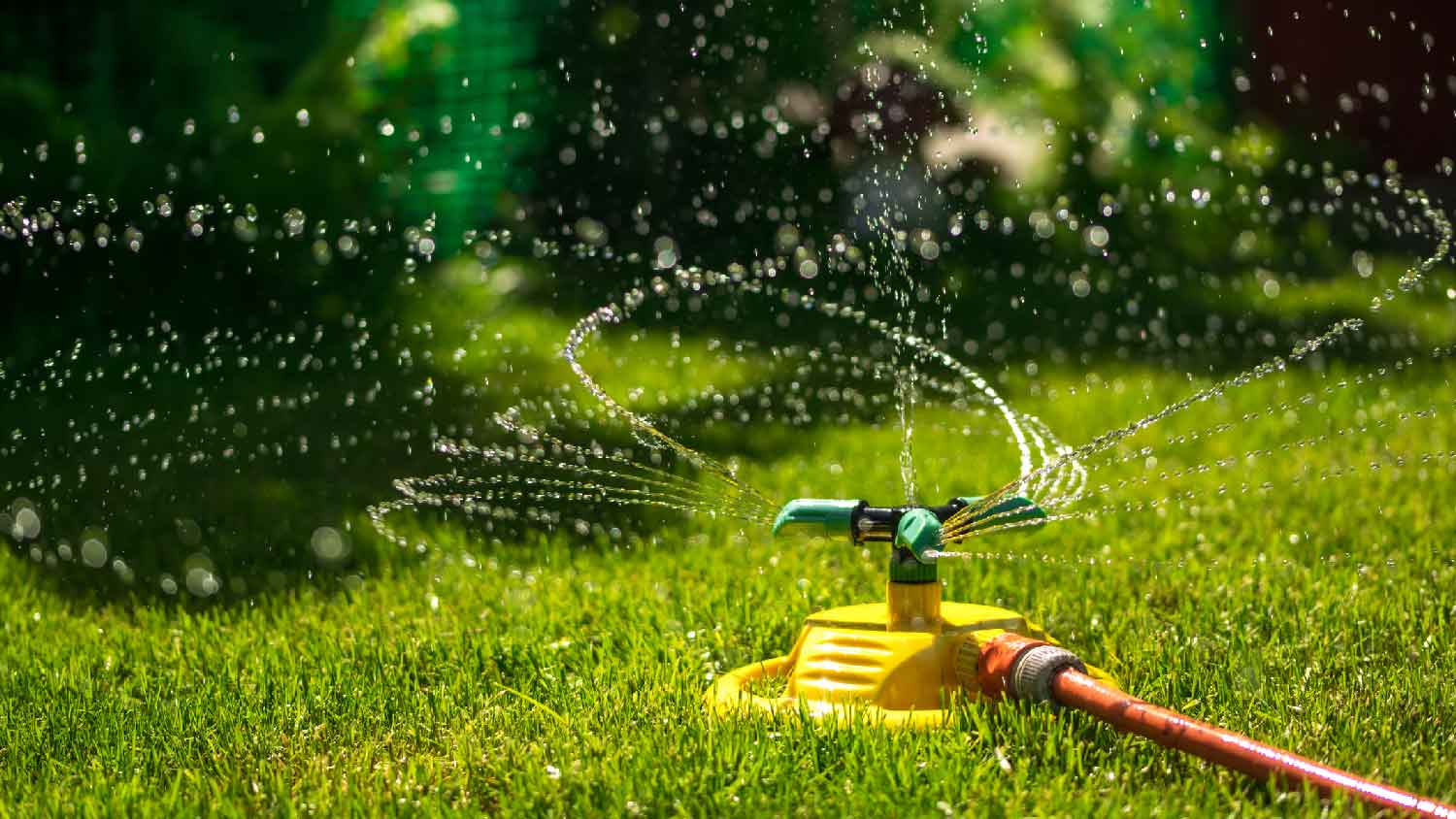
Rotary (or rotating) sprinklers have two or more arms that spin to create a circular stream. These sprinklers are ideal for large areas and give relatively even coverage—but if you want to water a rectangular lawn, you might miss the corners. This sprinkler is also at the mercy of water pressure. If the water pressure is low, the sprinkler head can stop rotating altogether.
Pros:
Best for lawns larger than 30 square feet.
Even coverage.
Circular pattern.
Gentler than impact sprinklers.
Cons:
Won’t work well with low water pressure.
Few (or no) adjustment options.
Not ideal for square or rectangular lawns.
5. Traveling Sprinklers
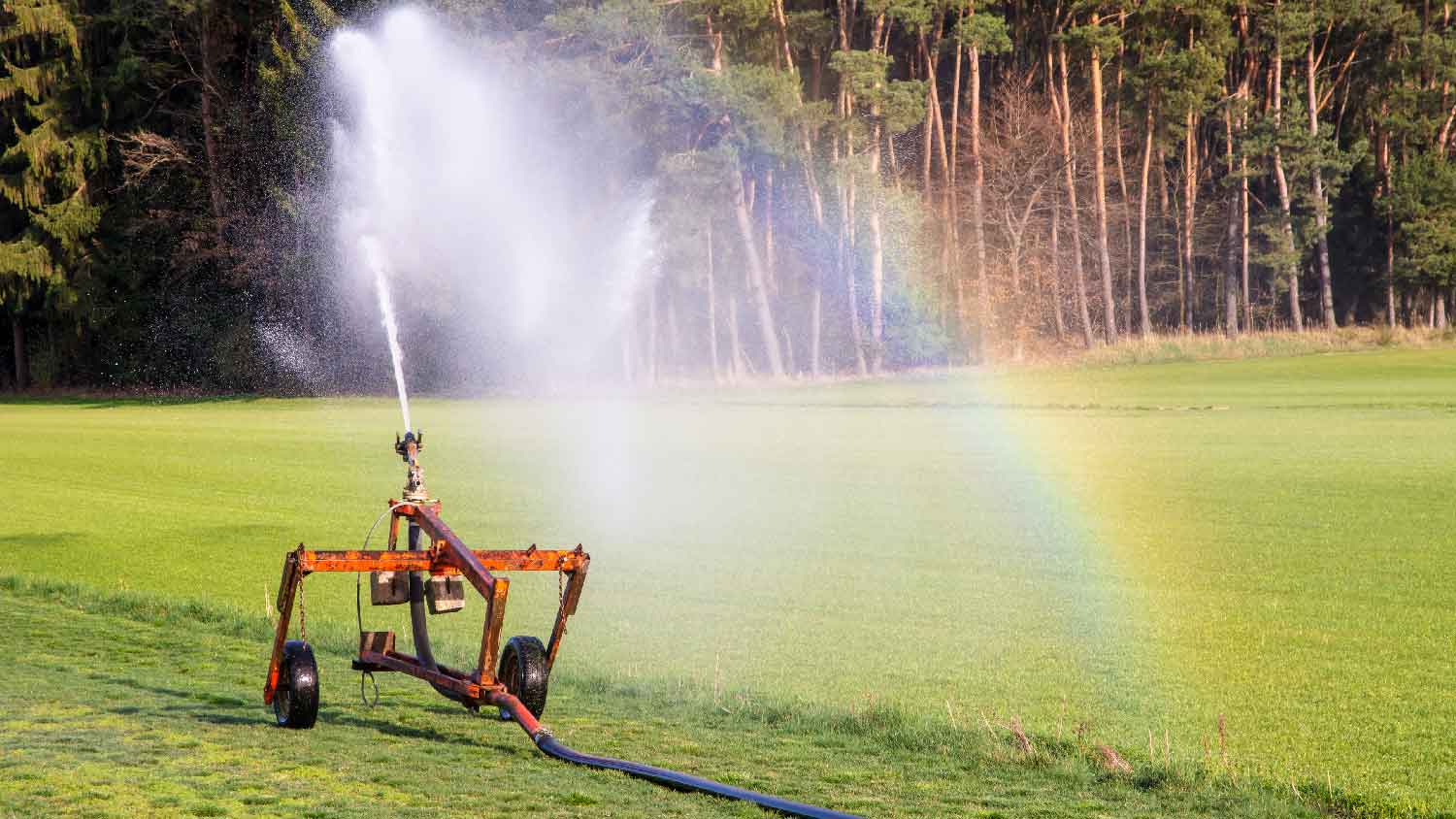
Traveling sprinklers look like a tiny tractor, but don’t worry. These sprinklers drive themselves using the magic of water pressure. As the water sprays, it moves gears inside the sprinkler, which turns the wheels. This type of sprinkler is a good option for a large area. It actually uses your garden hose as a track, so you can set it to go wherever you want (provided the hose will reach).
Pros:
Ideal for large, flat areas like your back or front yard.
Low risk of overwatering (unless it gets stuck).
Can customize the sprinkler’s path.
Cons:
Poor performance with low water pressure.
Can get stuck on inclines, rocks, and debris.
You’ll need to monitor it to make sure it doesn’t get stuck.
Not ideal for newly seeded lawns, since it will roll over the seeds.
6. Flood Sprinklers
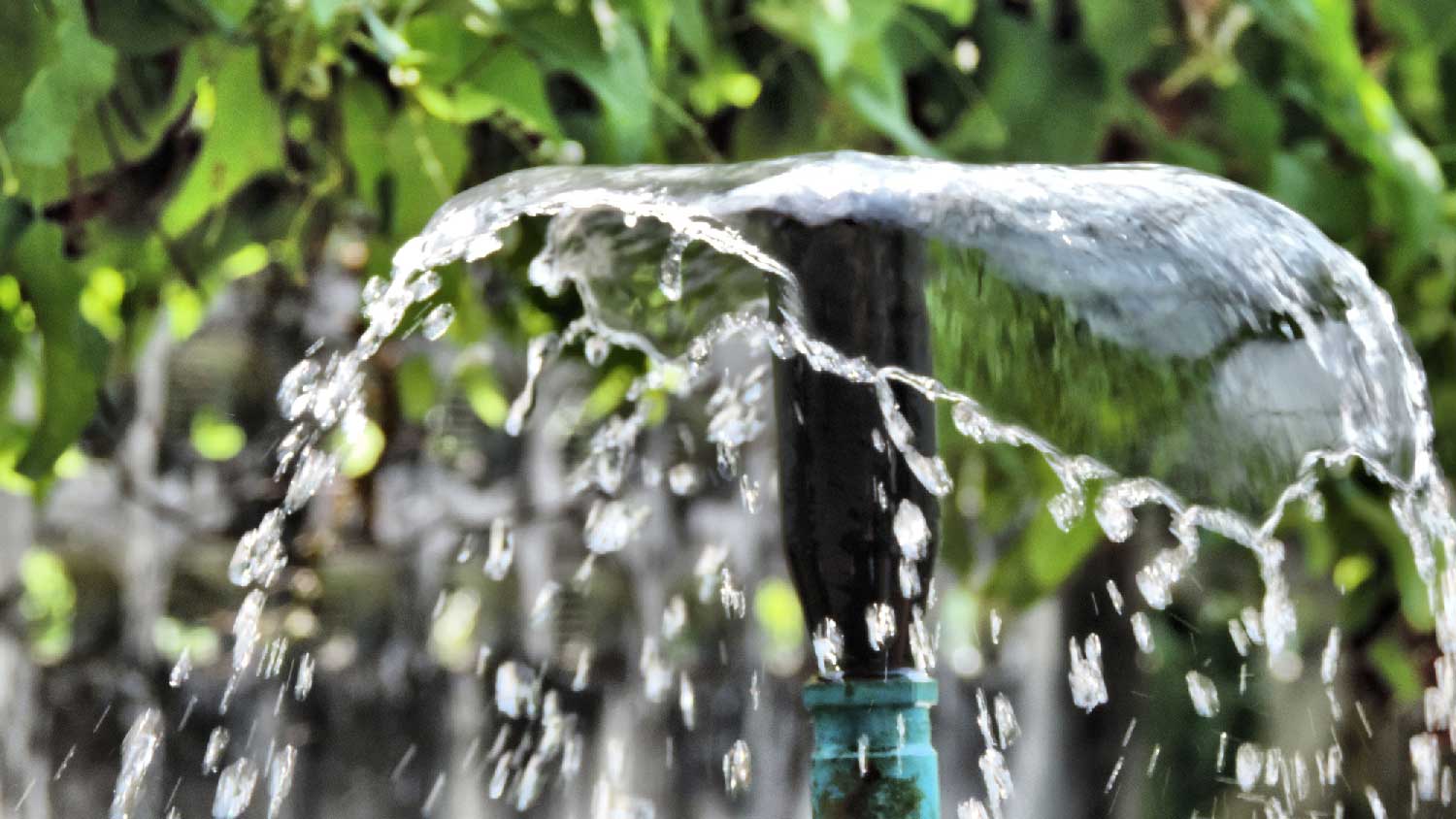
With flood sprinklers (also known as bubbler sprinklers), it’s all about flow. Flood sprinklers are designed to flood the surface of a small area—typically less than five feet wide—deep enough to penetrate the root zone. You can typically adjust the flow to pour out anywhere from 1/4 gallon per minute to 2 gallons per minute.
Flood sprinklers aren’t typically sprinkler hose attachments. You’ll have to install a sprinkler system, which usually requires the help of a local lawn irrigation service. That said, if you have the budget, these sprinkler heads are the ideal solution for landscaping features like trees, planters, and shrubs.
Pros:
Ideal for tree wells, planters, and shrubs.
Designed to reach deep root zones.
Fixed or adjustable flow.
Cons:
Less affordable than options that attach to a hose.
Won’t work for areas more than 5 feet wide.
7. Pop-Up Sprinkler
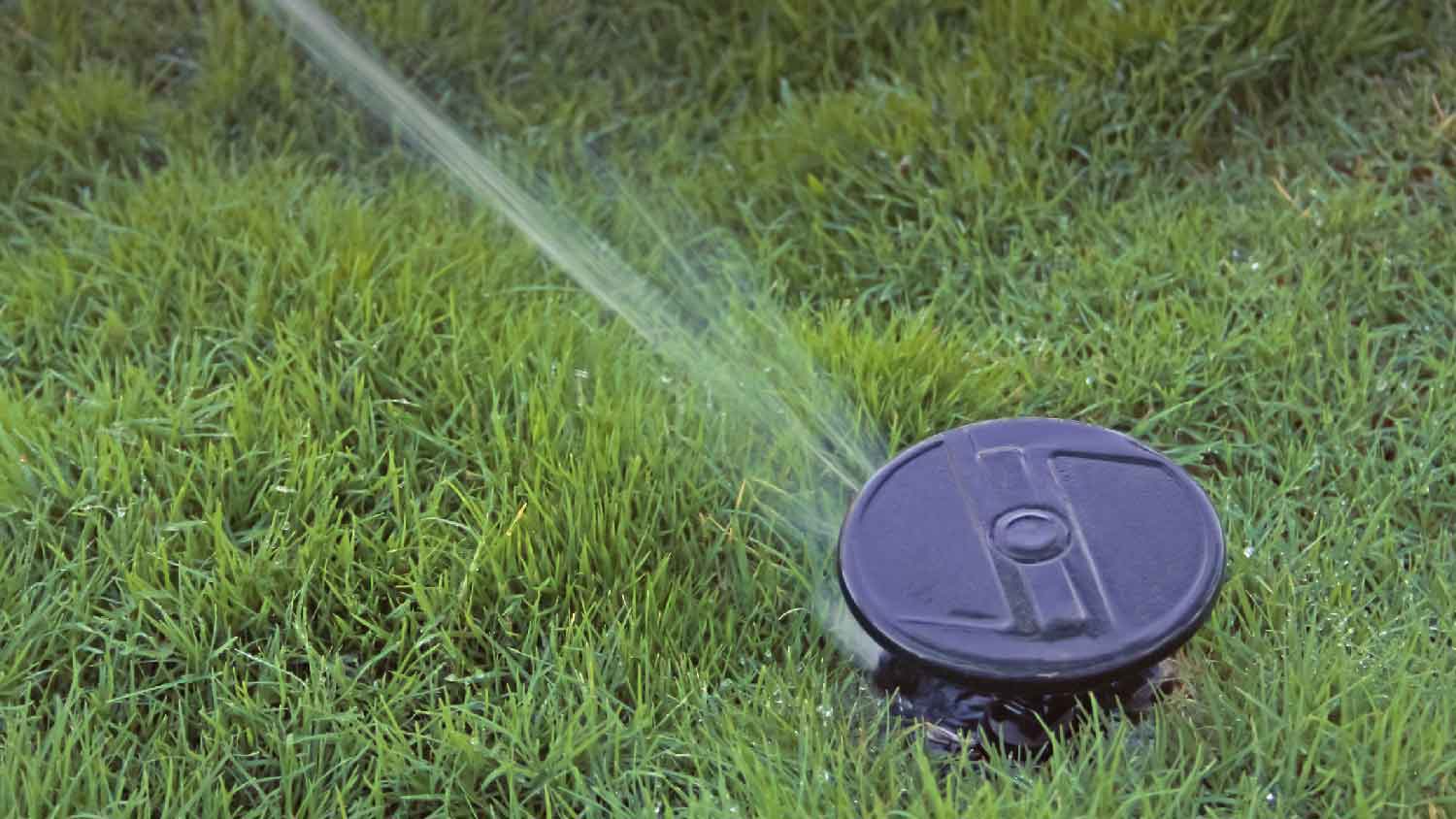
The name wasn’t lying with this type of sprinkler. It pops up like a prairie dog when it’s in use, and rests below ground when it’s not in use—out of sight, but not totally out of mind. Since pop-up sprinklers are part of a lawn irrigation system, you’ll need to winterize your sprinkler system when temperatures dip and turn your sprinklers back on in the spring.
This extra maintenance is often worth the effort because you won’t have to do much else the rest of the year. It’s all automatic based on how you set it, and you can customize the number of sprinkler heads to suit any space.
Pros:
Low spray angle that works with all kinds of lawns and gardens.
Tucks itself away when not in use (so no trip hazard).
Replacement heads are typically interchangeable among brands.
Typically part of an automatic sprinkler system, so you can set it and forget it.
Cons:
Less affordable than options that attach to a hose.
May require seasonal maintenance.
Can get stuck or clogged in particularly muddy areas.
May need to replace heads sooner than other options.
8. Shrub Sprinkler
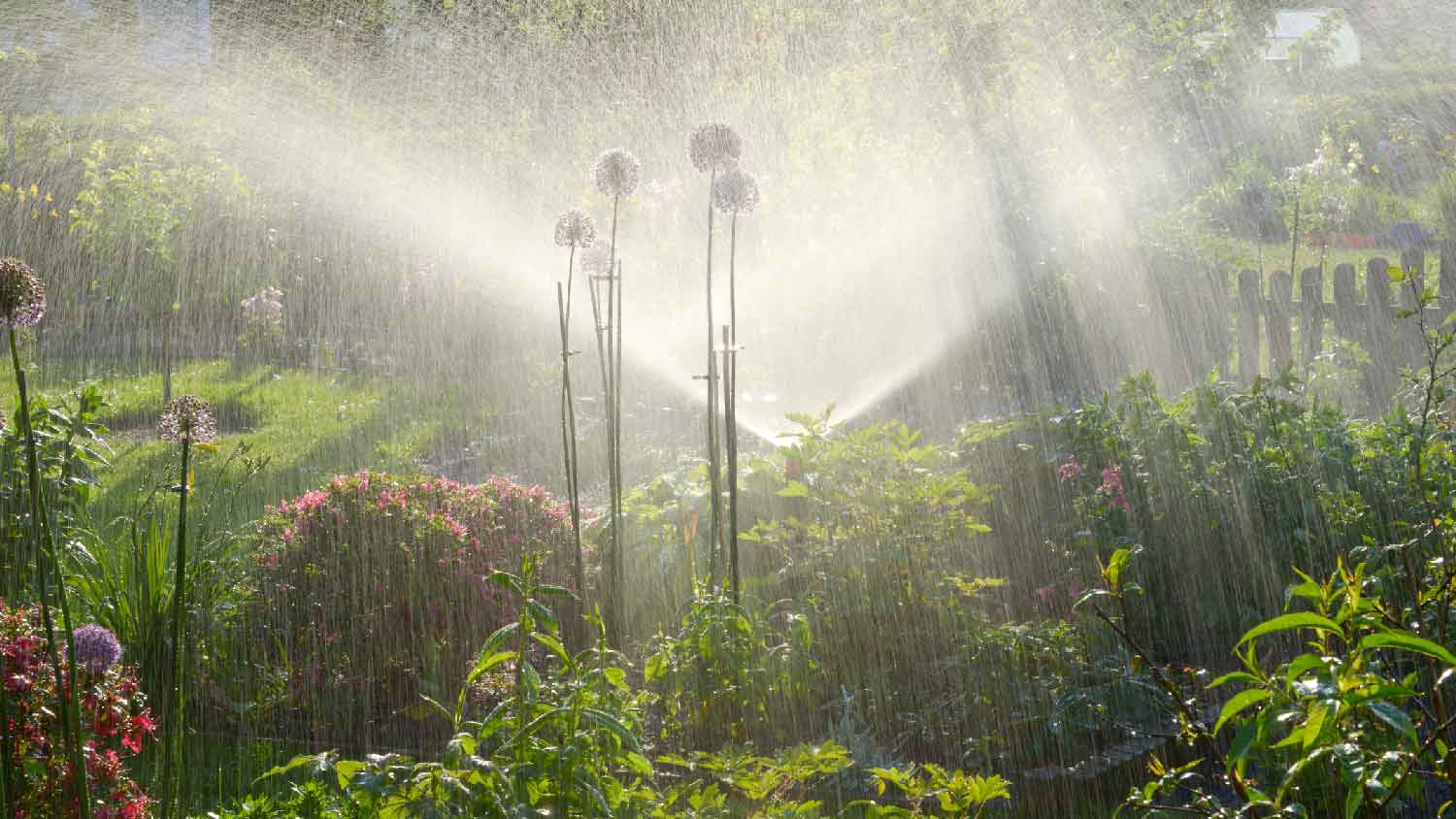
Shrub sprinklers are just what they sound like—sprinklers designed to sit at a low level and water shrubs. This type of sprinkler is mounted slightly above foliage to evenly water ground cover, planters, and dense gardens. Since it’s part of a sprinkler system, it may not be the most affordable option, but it does save you time when watering your garden. Just make sure you install them away from walkways or children’s play areas so nobody trips.
Pros:
Ideal for ground cover, gardens, and planters.
Provides even coverage.
Often part of an automatic sprinkler system, so you can set it and forget it.
Cons:
Less affordable than options that attach to a hose.
May require seasonal maintenance.
Trip hazard, so it’s only suitable away from areas people might walk.
9. Multiple Stream Sprinkler
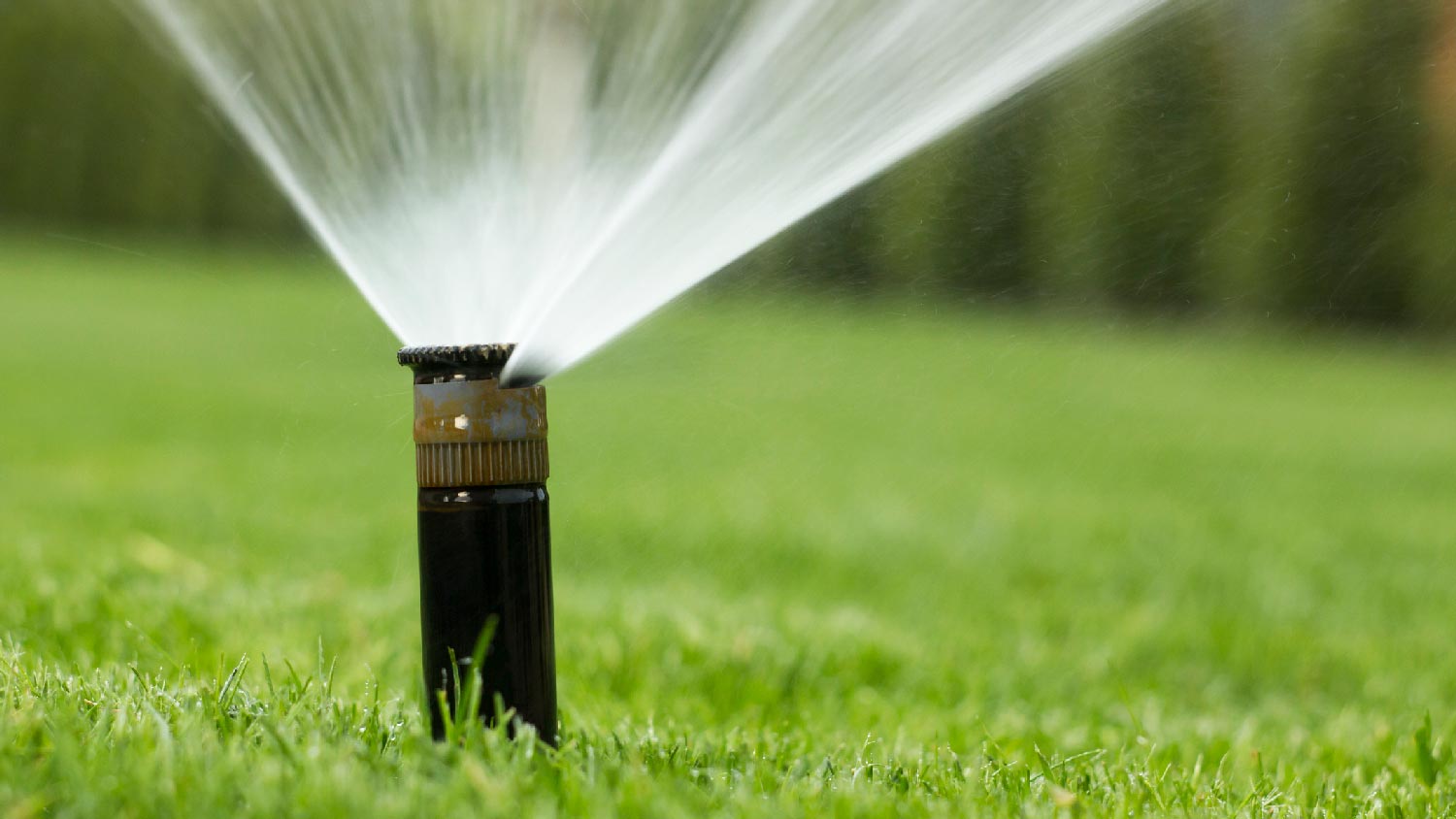
Multiple stream sprinklers (or, high-efficiency sprinkler heads) are similar to fixed sprinklers, but way more efficient. Instead of a single stream, they produce several thinner streams of water that come out of a single head. According to the U.S. Department of Energy, this type of water-efficient technology helps reduce evaporation and prevent runoff—meaning most of the water sprayed is actually used.
Pros:
Ideal for medium-sized lawns and ground cover.
Works well on slopes and uneven ground.
Provides even coverage.
Highly efficient.
Cons:
Isn’t always affordable.
Requires longer waterings than other options.
10. Sprinkler Hose
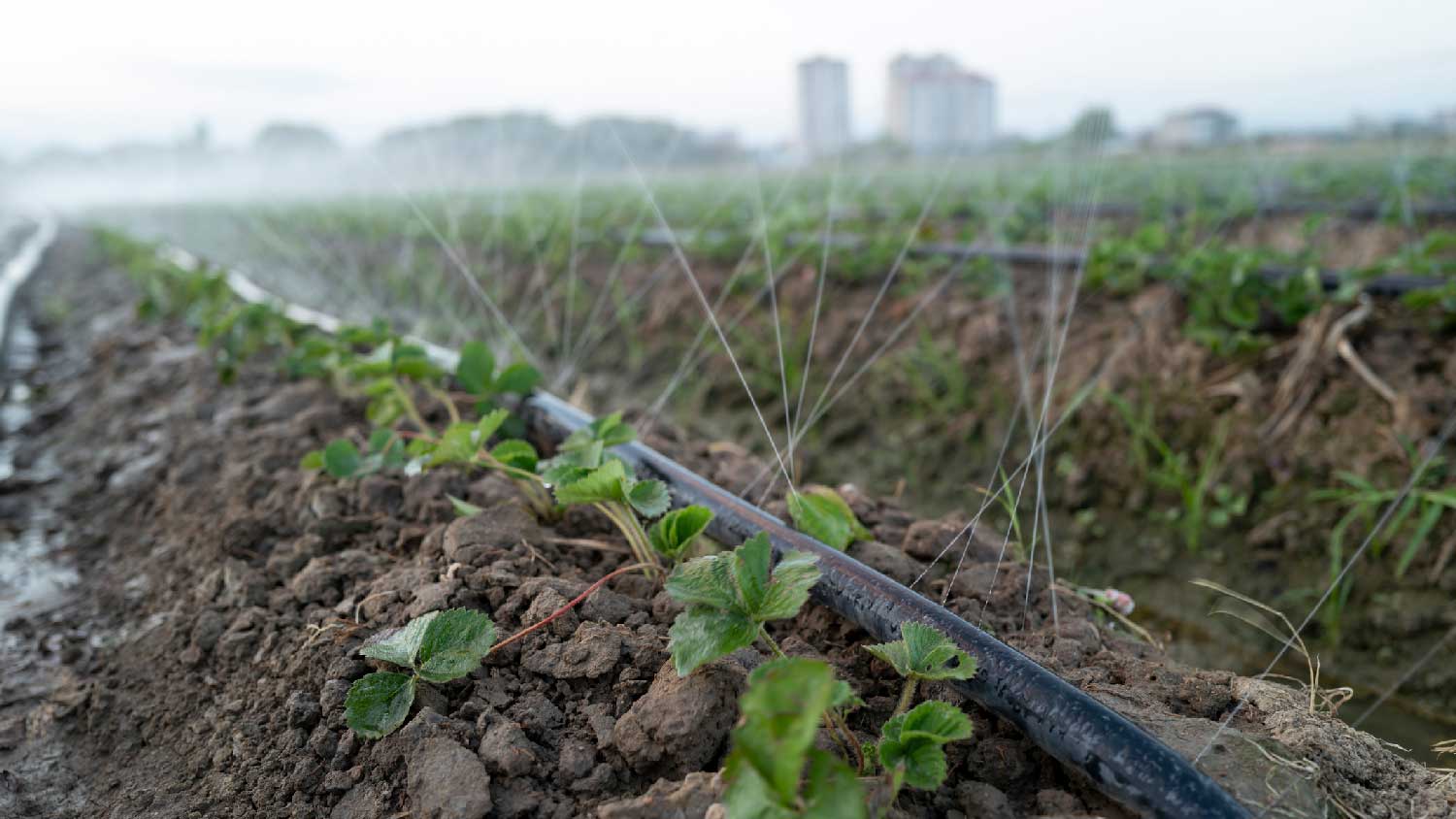
A sprinkler hose is pretty basic. It consists of a hose (much like your garden hose) that has holes along the body of the tube. When you turn it on, water sprays out of the holes wherever you lay the tube. This is a good option for small, irregularly-shaped areas that get missed by a more traditional sprinkler.
Many homeowners use sprinkler hoses along curved border gardens, narrow patches of lawn, or the base of newly planted trees. They have a gentle stream that’s ideal for foliage, but be forewarned, it doesn’t spray very far. The holes are also prone to clogging, since they’re often dragged along mulching or dirt.
Pros:
Works well in very small gardens or landscaping areas.
Bends to suit irregular shapes.
Great for areas that other sprinklers can’t reach.
Cons:
Lacks durability.
Limited coverage with low flow.
Holes prone to clogging.
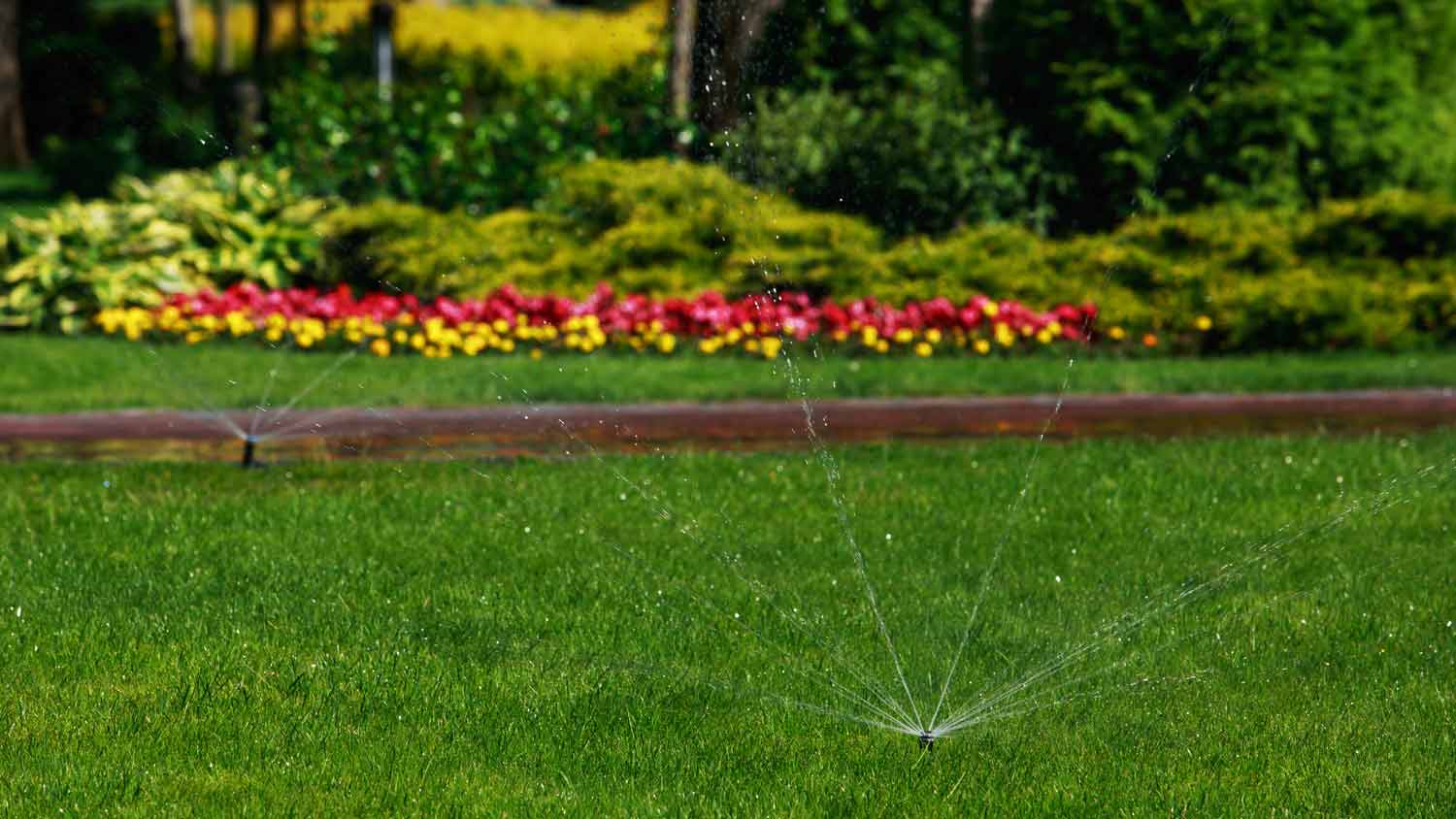


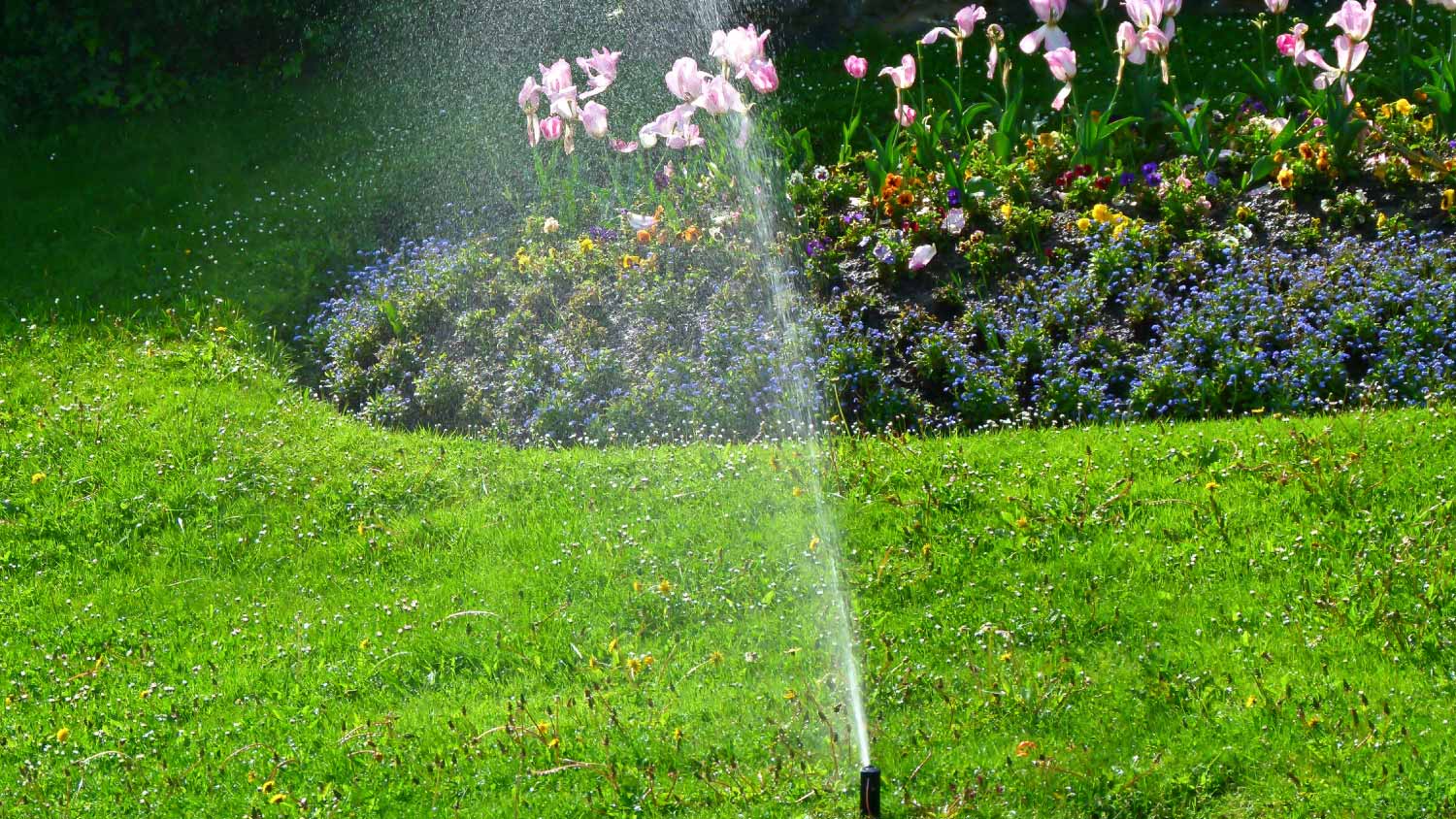

- Who to Call to Blow Out Sprinklers Before Winter Comes
- 8 Types of Sprinkler Heads to Get Your Grass Growing
- How Much Water Does a Sprinkler Use for Lawn Irrigation? (And How Much Is It Costing You?)
- 5 Expert Home Fire Sprinkler System Maintenance Tips
- Sprinklers 101: The Key Parts of the Sprinkler System
- Can an Irrigation System Leak If Turned Off? 8 Signs Not to Ignore
- How to Replace Sprinkler Heads to Irrigate Your Lawn Like a Pro
- Sprinkler Head Isn't Rotating: 4 Common Reasons Why
- Do You Know Who to Call for Sprinkler Repair? What to Do When Your Irrigation System Is Out of Commission
- Who Installs Sprinkler Systems? Learn Who to Hire















